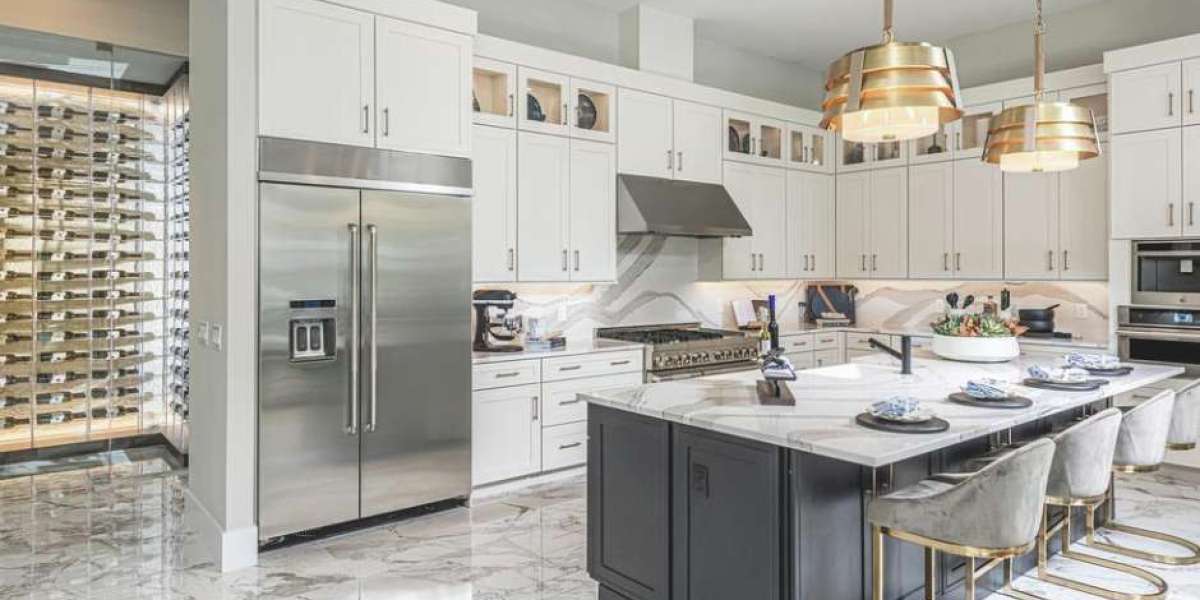Choosing the right color for kitchen slab tiles isn’t just about looks. It affects mood, maintenance, space perception, and even resale value. With the kitchen often being the most used space in the home, tile color selection should balance aesthetics and practicality. Whether you're building new or renovating, here’s a clear guide on how to select colors for kitchen slab tiles that work for your lifestyle and space.
1. Match the Overall Kitchen Theme
Start by identifying the theme or style of your kitchen. Is it modern, rustic, minimalist, or traditional? Your tile colors should support that theme.
- Modern kitchens typically favor monochromatic or contrasting color palettes think white countertops with black or grey slab tiles.
- Rustic kitchens work well with earthy tones like terracotta, beige, or muted greens.
- Minimalist designs benefit from soft, neutral tones like off-white, sand, or slate grey.
- Traditional kitchens often include classic colors such as deep browns, cream, and soft blues.
Choosing a color that aligns with your theme creates a seamless visual flow and makes the design look intentional.
2. Consider the Size of the Kitchen
Color affects the perception of space. If your kitchen is small, go for lighter-colored slab tiles. Whites, light greys, and pastels reflect more light, making the room feel larger and airier. Dark-colored tiles can make a small kitchen feel cramped.
In larger kitchens, you have more freedom. Darker shades like navy, charcoal, or even deep forest green can add depth and drama without overwhelming the space.
3. Think About Lighting
Lighting can dramatically change how a tile color appears. Consider the natural and artificial lighting in your kitchen.
- Natural light: If your kitchen gets plenty of sunlight, most colors will look good. However, bright light can make glossy tiles look overly shiny or reflective.
- Low-light kitchens: Avoid dark or heavily pigmented tiles, which can make the space feel dim and closed in. Opt for warm tones like beige or cream that brighten the space.
Before committing, get tile samples and observe them in your kitchen at different times of day. That’s the best way to see how the light affects the tile’s color.
4. Evaluate Maintenance and Stain Visibility
Kitchens are high-traffic areas where spills, splatters, and grease are inevitable. Color can hide or highlight these stains.
- White or light-colored tiles: These can show stains, but they also show dirt early—prompting faster cleanup.
- Medium-toned tiles: Colors like taupe, greige, and speckled grey are ideal because they balance between hiding stains and not showing dust too obviously.
- Dark tiles: These can hide stains but may show streaks from cleaning or hard water spots.
Choose a finish that’s easy to clean matte finishes tend to mask imperfections better than high-gloss ones, especially under kitchen lighting.
5. Coordinate with Cabinets and Countertops
Slab tile color should not clash with other major surfaces. Think about how it looks next to cabinets and countertops. A simple rule: if your countertops are bold, go for subtle tile colors, and vice versa.
For instance:
- White cabinets with black countertops work great with grey or cream slab tiles.
- Wood-finished cabinets pair well with natural shades like sand, olive, or rust.
- Bright-colored cabinets (blue, green, red) need neutral tile colors like white, grey, or beige to tone down the look.
This balancing act ensures a harmonious, uncluttered kitchen aesthetic.
6. Add Texture or Pattern for Interest
If you're drawn to neutral colors but don’t want the kitchen to look bland, consider adding texture or a subtle pattern to the slab tiles. Marble-look, matte textured surfaces, or tiles with light veining add depth and character without overwhelming the color scheme.
Some tiles manufacturer in Morbi are known for producing elegant textured slabs that add visual interest to even the simplest kitchens.
7. Stick to Timeless Over Trendy
Tile is not something you change often. That’s why it’s smart to avoid overly trendy colors that may look outdated in a few years.
Neutral colors like grey, white, beige, and black remain popular for a reason they’re timeless, flexible, and easy to decorate around. If you want a pop of color, consider using it in smaller, changeable items like accessories or backsplashes.
8. Sample and Test
Don’t rely solely on how a tile looks in the showroom or online. Get samples from the tiles manufacturer in India or your local store and place them in your kitchen. View them under your lighting, next to your cabinets and appliances. This helps avoid expensive mistakes and ensures your choice works in real life.
9. Consider Your Flooring
If your kitchen floor has tiles or hardwood in a strong color or pattern, your slab tiles should complement, not compete. Go for slab colors that echo tones from the flooring or that provide contrast in a cohesive way.
For example:
- Dark wooden floors pair beautifully with light slab tiles.
- Grey or concrete floors work well with warm-toned slab tiles for balance.
Creating contrast between floor and counter surfaces helps define the space while keeping it visually interesting.
10. Think Long-Term Resale Value
If you’re planning to sell your home in the future, neutral slab tile colors are safer. They appeal to a wider range of buyers and make the kitchen feel like a blank canvas.
Unusual colors may limit appeal even if they’re in style now. Go with classic colors and high-quality finishes from reputed suppliers. Some buyers may even ask about the tiles manufacturer in India to ensure product durability and reputation.
Final Thoughts
Choosing the right kitchen slab tile color comes down to understanding your space, needs, and long-term plans. Consider the theme, size, lighting, and how the tile will look with other surfaces. Always sample before buying and prioritize timeless choices that work with your lifestyle.
If you want the best selection, look for a tiles manufacturer in Morbi, known for offering a wide range of slab colors and finishes. Ultimately, go for a tile color that looks great, performs well, and makes your kitchen a place you enjoy spending time in.


